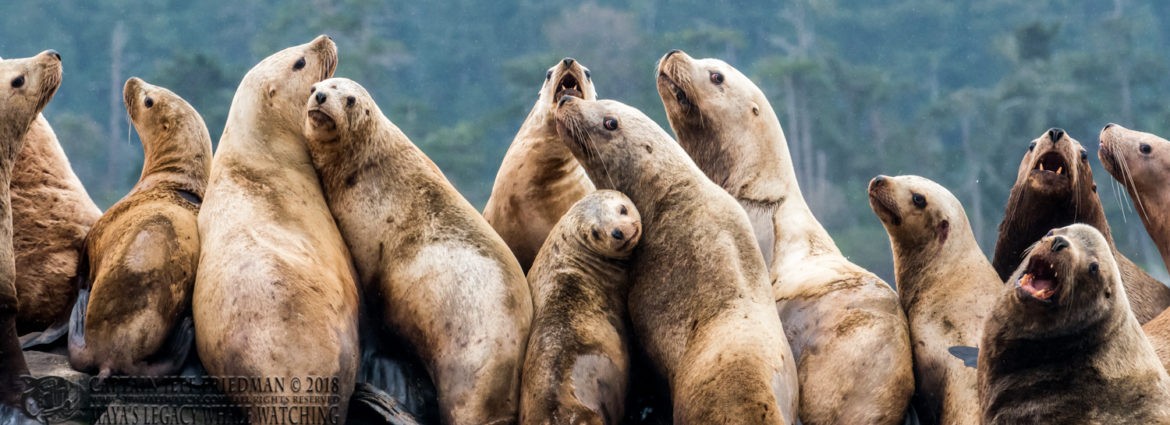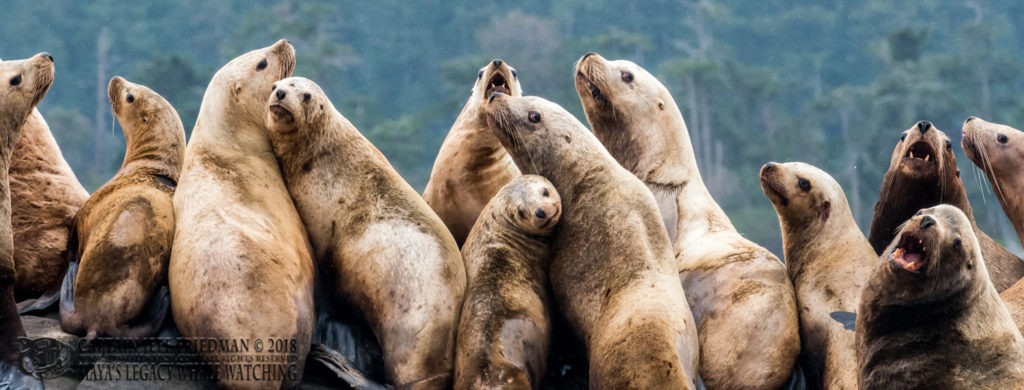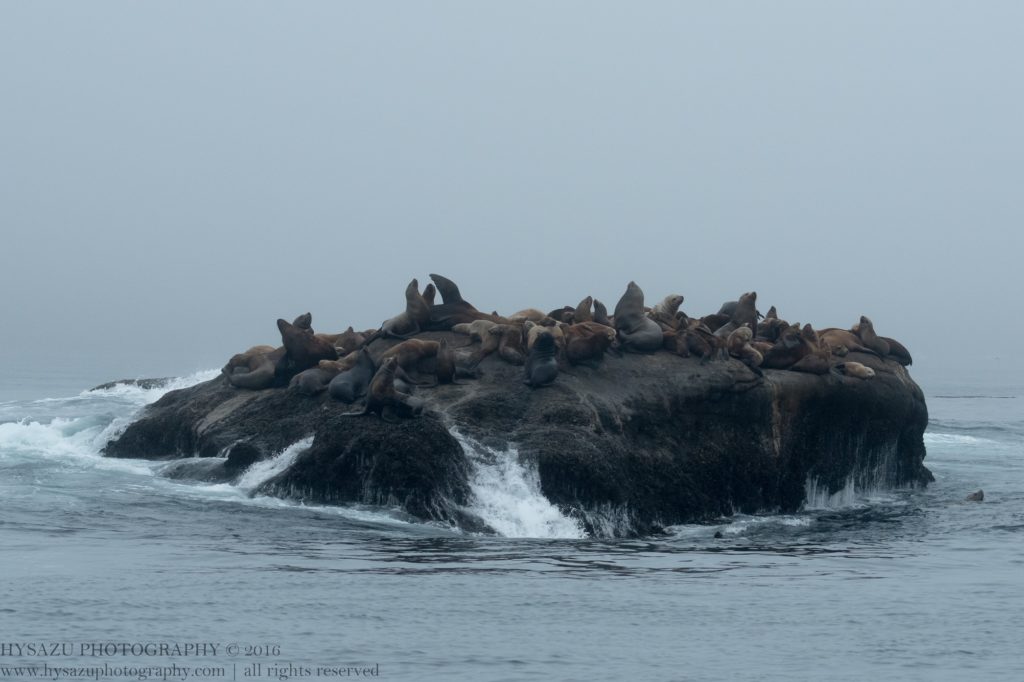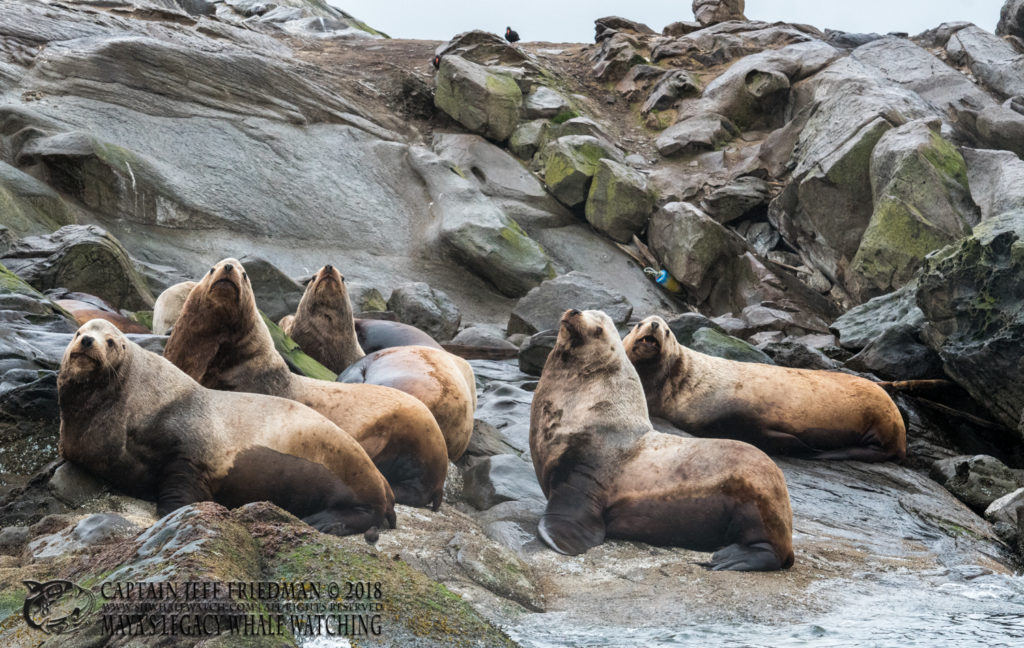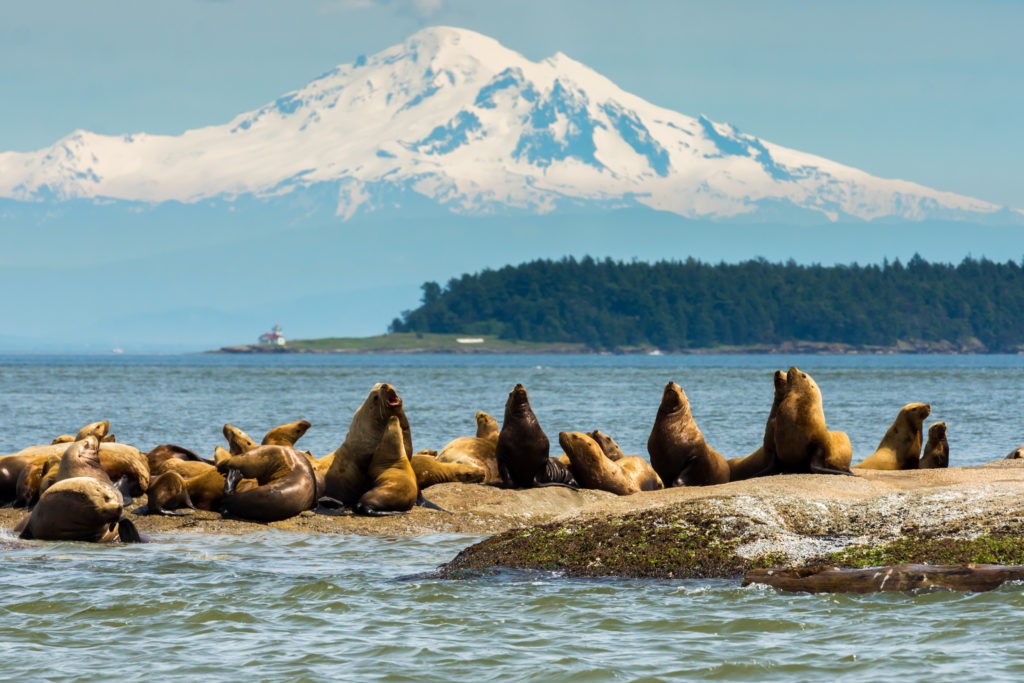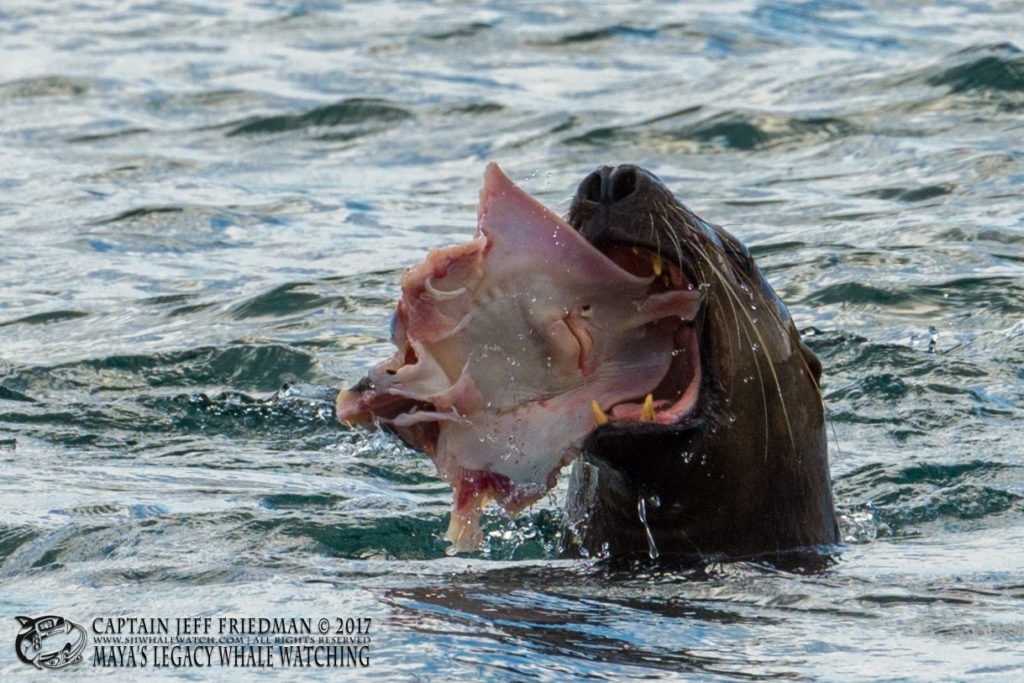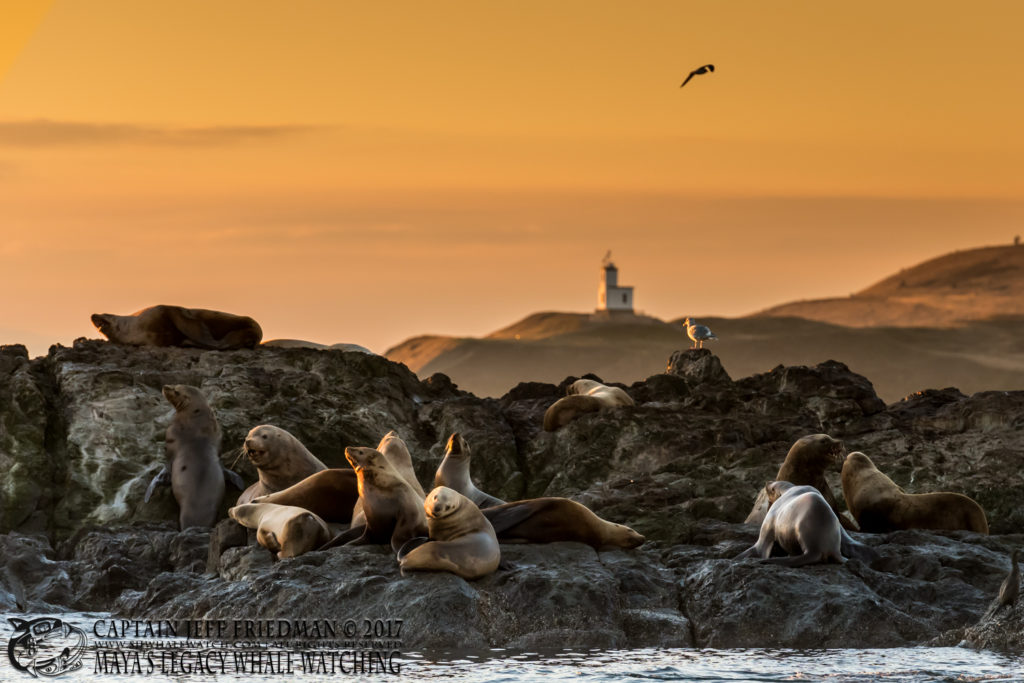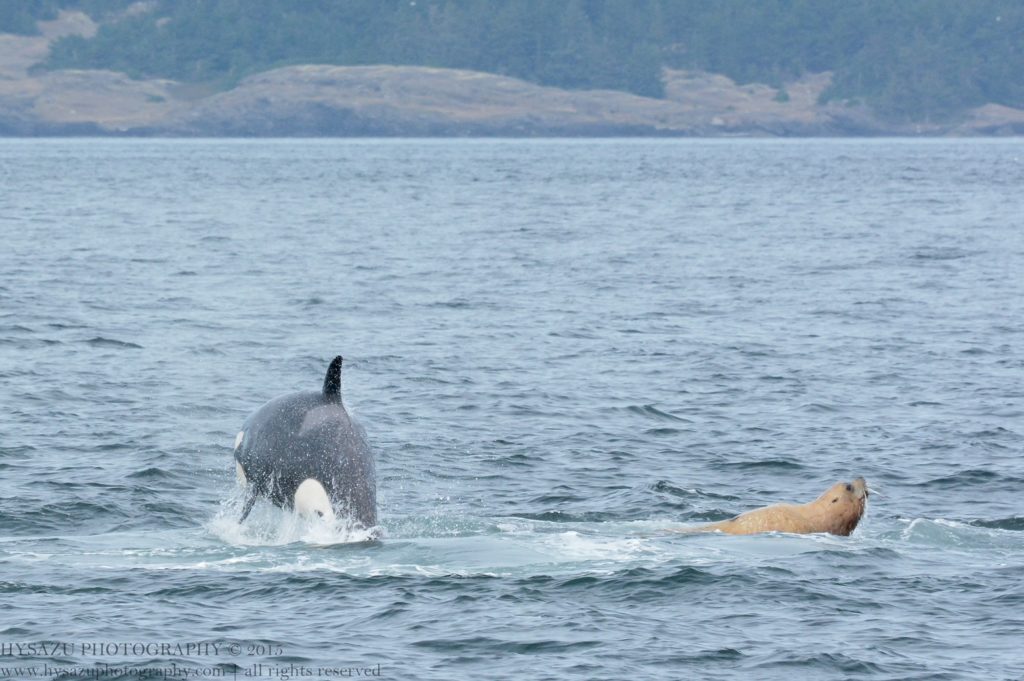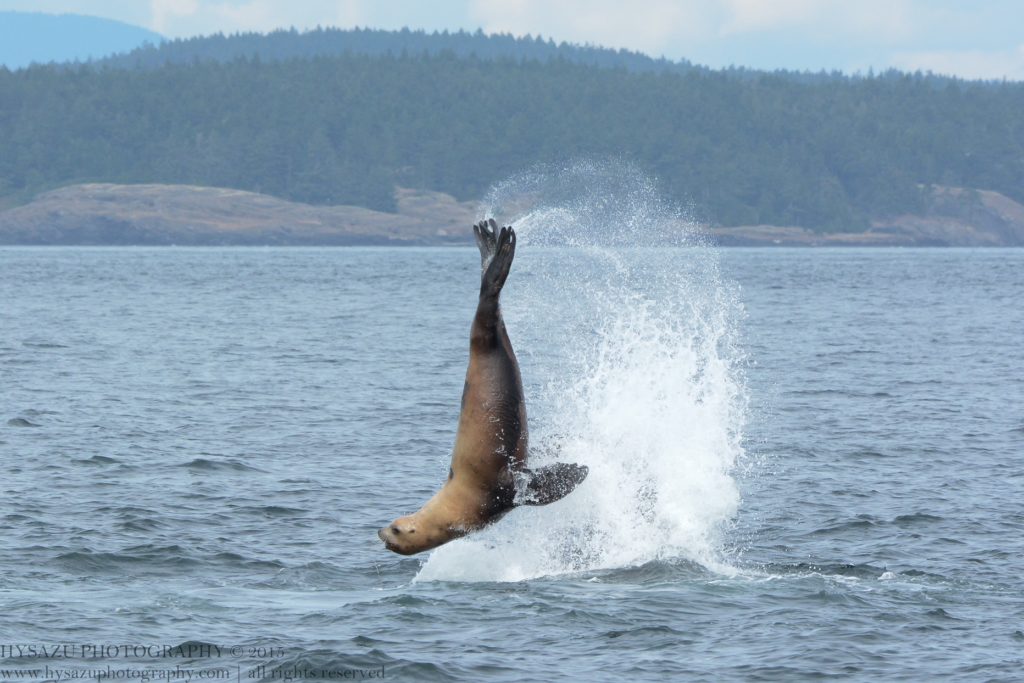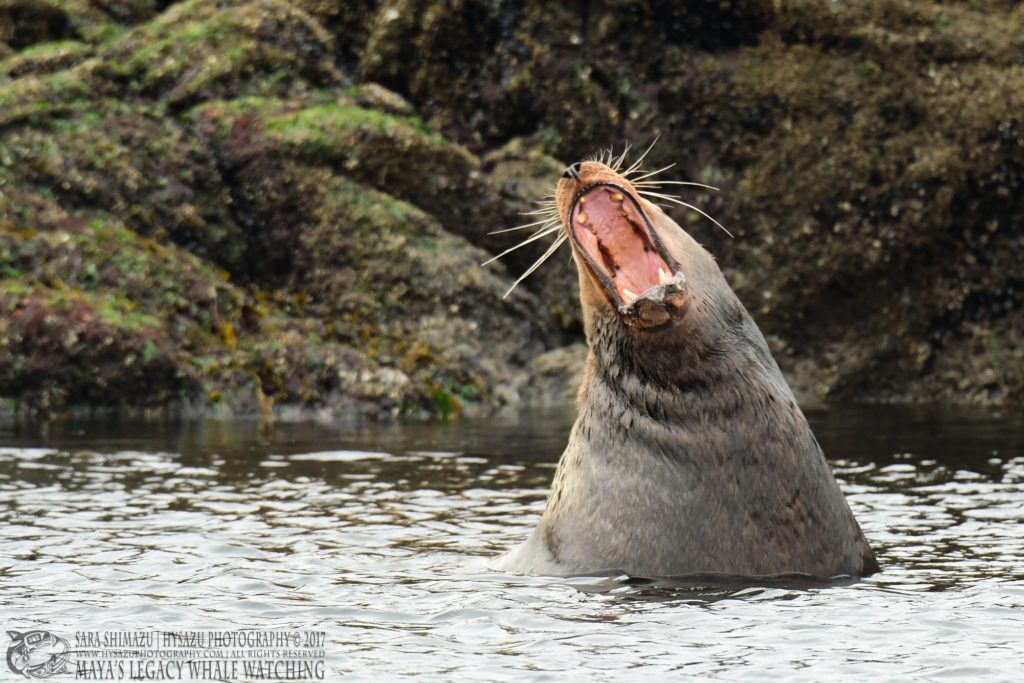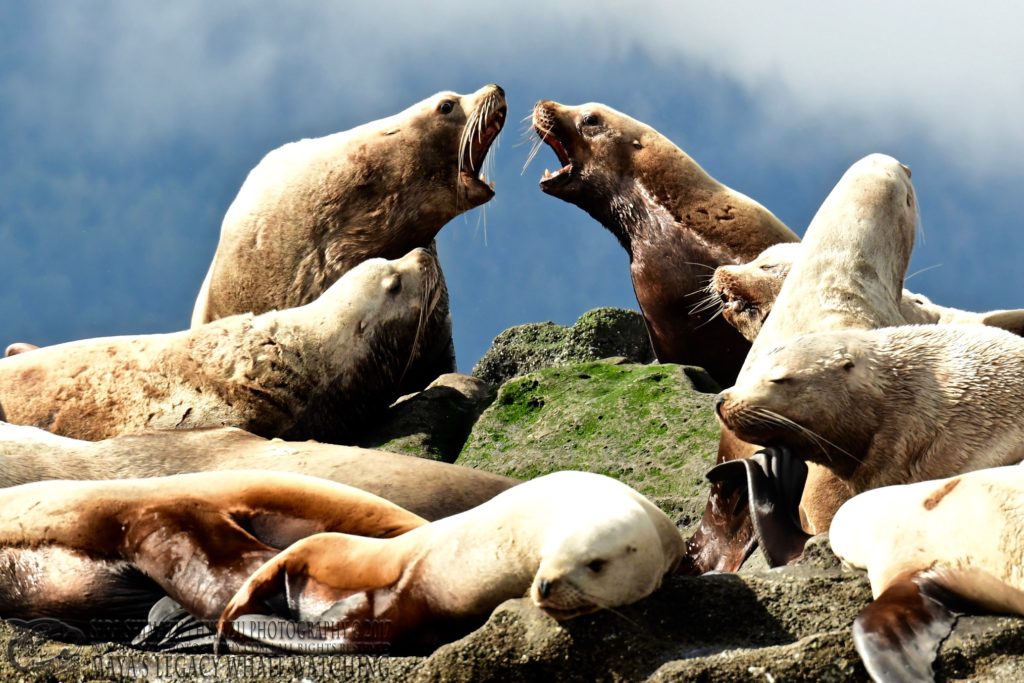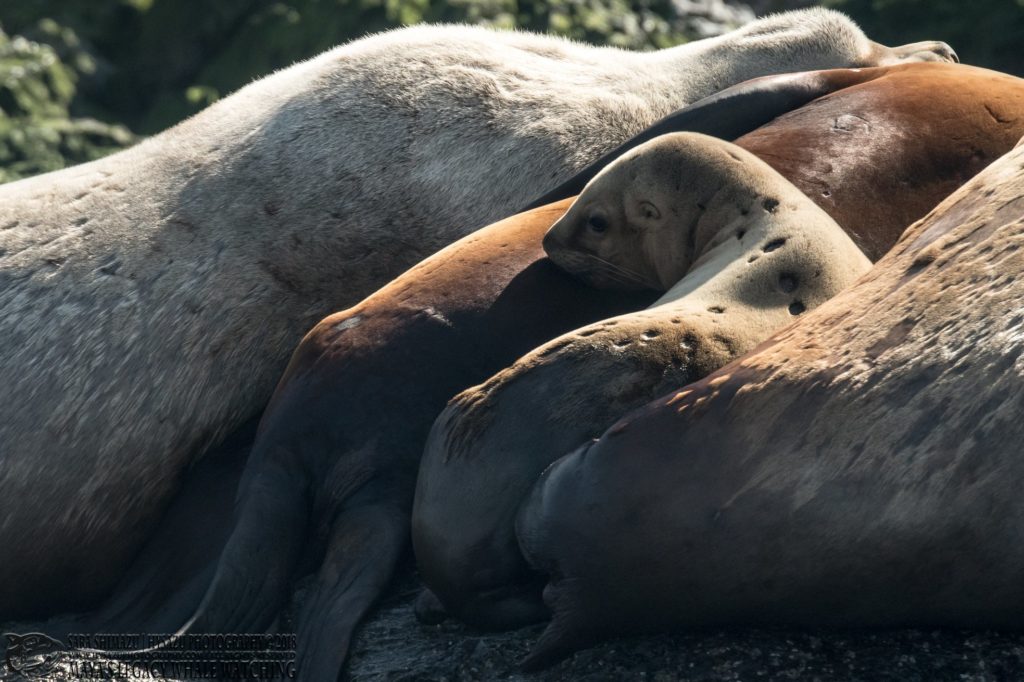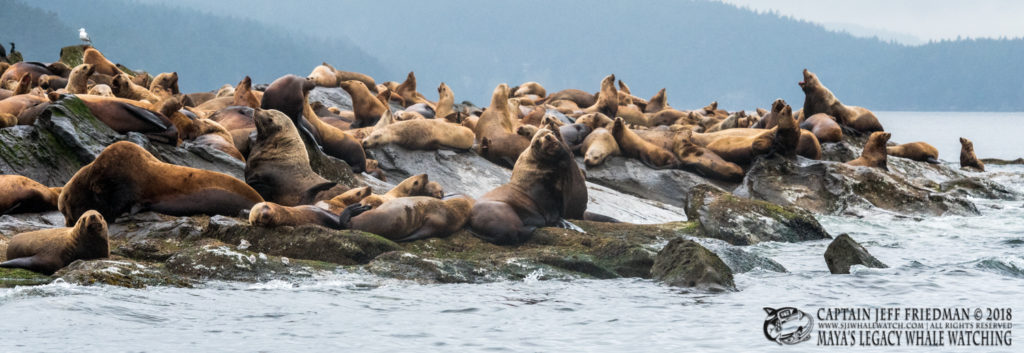Come See the Steller Sea Lions Before They’re Gone (for the Summer)!
They’re not what you’re expecting when you think of a sea lion. You expect something sleek, dark, with a barking voice bordering on shrill. You don’t expect these hulking giants who weigh more than a small car regarding you with dark eyes and dubious looks as you drift past. But somehow, when all is said and done, they’re exactly what a sea lion is. Exactly what you think you should have pictured all along with their tawny manes and a vocabulary of growls and guttural roars. They are a huge (pun intended) highlight of our whale watching and wildlife tours.
These are Steller sea lions.
Named after naturalist Georg Wilhelm Steller, these animals were first recorded and described by him in the mid-1700s. We now know more about these behemoths than we did back then. They’re the largest sea lion species in the world—males grow up to 2,500 pounds. They range up to 200 kilometers offshore in the winter in search of food and they seem to have a taste for skates, octopus, and salmon (and many other things too!). Though they are giants themselves they are still on the menu for Bigg’s killer whales, however we’ve seen them fight back, especially when they are in a group. There is definitely safety in numbers!
In comparison to the harbor seals we see on most of our whale watching and wildlife tours, the female Steller sea lions have one of the largest maternal investments of any pinniped species. Females possess incredibly strong site fidelity; they will return within three meters of where they were born to rear their own pups. Adults have also been seen nursing from their mothers, sometimes with their own pups at their side.
Here in the San Juan Islands we see more males than females but as the population recovers we are seeing an increasing number of females and even pups! There are several consistent haul out sites we see on our wildlife tours year after year, including Whale Rocks in Cattle Pass, Green Point on Spieden Island, and the Belle Chain Islets up in the Strait of Georgia. By late May most of them head out to the open Pacific and north to their breeding rookeries and we won’t see them on our whale watching tours again until the early fall.
During our spring season whale watching and wildlife tours we get to see the largest congregations of Steller sea lions of the year, directly preceding their departure for their breeding grounds.
We hope you can join us to see these lions of the sea before they take off for the summer. You will have a great chance to see them on our tours departing from both downtown Friday Harbor and Snug Harbor Resort.


